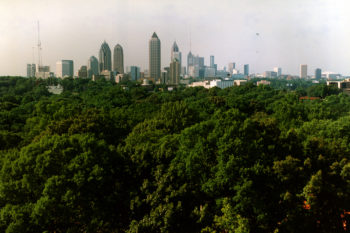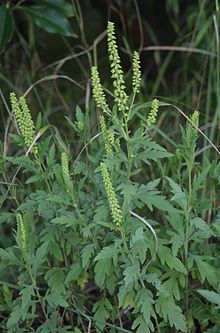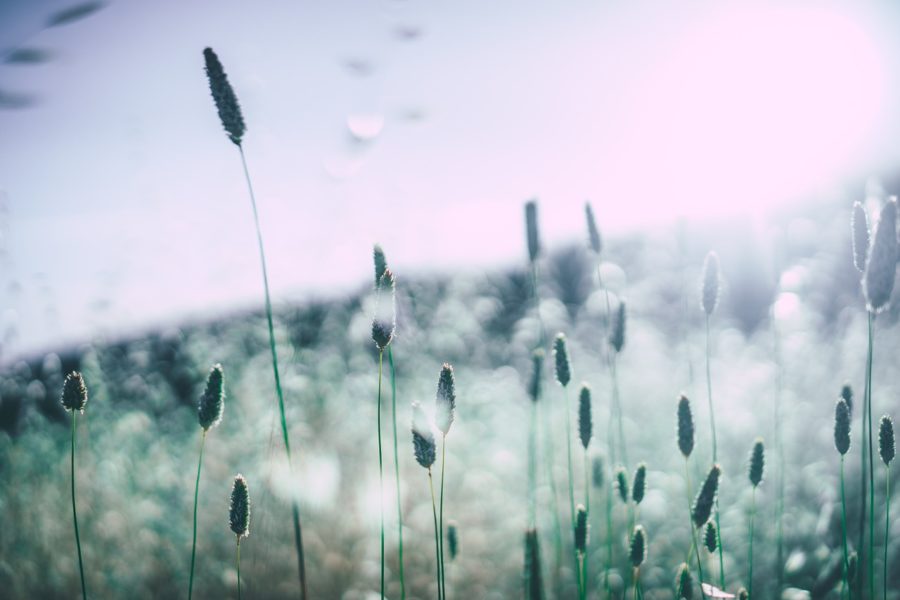To many people, spring and fall are the prettiest and most pleasant times of the year in the Peach State. But these temperate, transitional seasons have a downside: They often help trigger allergies.
The seasonal pollen that causes an uptick in watery eyes and runny noses has been on the rise in recent years, both in Georgia and elsewhere, and researchers and physicians are working hard to determine the cause and take preventive action.
Respiratory allergic reactions stem from an exacerbated immune response to an allergen, such as pollen. The body releases an antibody called IgE to combat the allergen, which can produce a set of symptoms from itching to coughing. Outdoor airborne allergens also can worsen chronic respiratory problems, such as asthma.
There are many kinds of plants and many types of pollen, and they vary greatly by region. So the risk of allergic reaction varies from place to place. Georgia is blessed with a lot of trees and other plant cover, which is a good thing overall, but it means there is great potential for pollen-related allergies.
In the sprawling metropolis of Atlanta, where the air quality has been monitored and studied heavily for years, the top contributors to aero-allergens are trees such as oak in the spring and ragweed in the fall.
“We do have a problem in the fall [with ragweed], but it’s not as bad as some cities like in the Midwest,” says Dr. Stanley Fineman, an allergist at Atlanta Allergy and Asthma Clinic (AAAC).

Spring is certainly the most taxing time for those in the area, as pollen counts can rise well above 1,000 for days at a time. “We just have such a bounty of trees and a robust response, that our main season is the tree season,” says Dr. Marissa Shams, a professor of medicine and pediatrics at the Emory Asthma, Allergy, and Immunology Program.
New insights on that annoying dust
The most noticeable spring pollen in much of Georgia is the yellow dusting from pine trees. Sometimes it is much more than a mere “dusting,” with cars and houses getting coated for days on end.

It has long been known that pine pollen, unsightly as it is, does not typically cause allergic reactions. But forthcoming results of CDC research suggests pine is an indicator of other, more allergenic pollen species, such as oak.
“Our program found that pine and oak pollen season in Atlanta generally occur simultaneously, so the yellow pollen that you see may actually be a good indicator of when oak pollen is in the air,” says Arie Manangan, a CDC health scientist who studies how changes in the climate and environment may contribute to pollen production in plants.
Pollen production and allergic reactions have recently been on the rise in many cities around the globe, including Georgia’s capital city.
The CDC collaborates with Fineman, as the AAAC has been collecting pollen data for the last 20 years. “Through our analysis of their data, we have seen an increasing trend in spring pollen counts,” says Manangan.
Rising temperatures and increased carbon dioxide levels are two of the possible causes of higher pollen counts, experts say.
“With increasing temperatures, we’ve seen elongated pollen seasons,” says Shams.
Fineman adds, “We are seeing the pollen season start in February, where as in the past it’s always been mid-March to late March.”
As pollen seasons get longer, there is a greater risk for those with allergies to have reactions, and for people who have not previously had allergies to develop symptoms. Beyond temperature, carbon dioxide has been shown to increase the pollen counts of ragweed plants when tested in controlled chambers.

But the definitive connections between climate change and pollen are still being puzzled out by researchers.

“Most pollen datasets go back less than 10 years, which does not provide enough data to effectively analyze long-term relationships” between temperatures and pollen counts, says Manangan. “Additionally, several pollen-counting stations only provide grouped pollen counts, which can mask a relationship with climate.”
A pilot project between the CDC and the Council of State and Territorial Epidemiologists aims to fill in these gaps in our knowledge of pollen. “The monitoring network pilot project will catalog existing pollen- and mold-counting stations, increase the number of stations CDC can access, and develop a strategic vision for the development of an aero-allergen monitoring network,” says Manangan. The project concludes at the end of the summer, with hopes to expand it in the future.
Making pollen worse
Other human activities besides creation of greenhouse gases may be contributing to rising pollen levels. Landscape changes, with their influence on patterns of vegetation in a particular area, can affect pollen in significant ways.
“We’ve seen an increase in non-native pollen [in Atlanta], the most significant being Chinese elm in the fall,” says Shams. Chinese elms have increasingly been planted in North America in recent generations as disease has drastically reduced populations of the once ubiquitous American elm.

Multiple studies have also shown that air pollution, a major problem in the Atlanta area, can play a role in allergies linked to pollen.
“One thing pollution components can do is fracture the pollen into smaller particles, which can penetrate deeper into respiratory tissue,” explains Dr. Shams.
Ozone, a variant form of oxygen that is contained in smog and is known to have direct health effects on humans, can also affect us indirectly by changing the chemistry of pollen and making it more allergenic.
As pollen levels increase, people with allergies are doing their best to cope. Ian Buller, a graduate student at Rollins School of Public Health, suffers from pollen allergies. “The worst part is waking up and not being able to breathe without sneezing,” says Buller. “This year, it started in early March, so I was caught off guard.”
There are multiple ways to approach treatment if you are experiencing allergic reactions from pollen. “The first step is to document the immune reaction with an allergy skin test,’’ says Fineman. “Then we can identify what’s causing the allergic reaction. Following the test, the options for treatment might include medication, allergy shots, or trying to avoid exposure.”
“With allergy shots, over time, we can actually modulate the immune system and make it less allergic,” Shams adds.
Sam Peters writes freelance environmental and health journalism in the Atlanta area. He received a bachelor’s degree in chemistry from St. Olaf College in 2014 and is currently pursuing a PhD in Environmental Health Sciences from Emory University.

